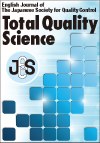Rehabilitation is a medical intervention implemented mainly by therapists under the prescription orders of medical doctors in hospitals. It is difficult to standardize rehabilitation intervention processes because they largely depend on individual therapists rather than medicines or instruments, and there are few quantitative clinical indicators. In such situations, there are differences in intervention processes and outcomes between therapists and hospitals.
In this study, we aim to develop a method for standardization of rehabilitation intervention processes based on actual clinical data. In our method, we firstly prepare a standard intervention process that could include the differences between therapists and hospitals. Second, we prepare an investigation sheet, which is designed to record information on intervention, outcome, and patient background. Third, we accumulate actual clinical data on the standard intervention process. Fourth, we analyze the accumulated clinical data, based on the evaluation structure designed for the target rehabilitation intervention. Finally, we try to standardize the intervention processes based on the results of analysis among therapists and hospitals.
We applied our method to 87 total cases of dysphagia rehabilitation for cerebral stroke patients at three hospitals as the first cycle of standardization, and 130 cases as the second cycle. We thus designed a standard intervention process to record the clinical processes actually implemented in three hospitals. In addition, we obtained findings both on the effects of patient background and on effective intervention which supported the validity of our proposal.
View full abstract
